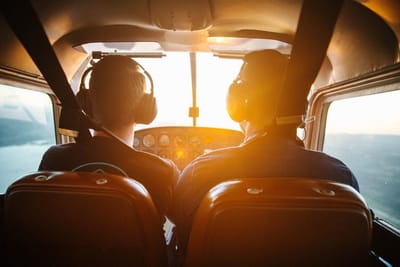flight literacy 2

Basic Concepts Applied Before and During a Flight
Computation on the basis of time, airspeed, distance and direction in navigation is known as reckoning. There are various products which are provided by the above variations once they are adjusted by wither wind or speed. Note that the heading which has been predicted takes the aircraft towards the intended path and the time to arrive at the checkpoint or destination is established. The features are exceptional for any flight which occurs over water, but is used by pilots during cross country flying. All the heading calculated are monitored constantly and corrected by the pilotage department in regard to observations from the checkpoint. learn more
Whenever there is no wind the aircraft track remains the same as the heading which is equivalent to the airspeed; this condition exist on rare conditions. The pilot’s version of vector and analysis remains on the basis of dead reckoning. Wind triangle explains the effects of breeze on flight, heading and the time taken to determine the flight. The process can be applied by use of complicated instrument related to flight. The pilots are familiar with all the essential principles which estimates how they are adequate in visual flight without necessarily using drawn diagrams.
If there are beginning students they should develop skills used in construction of diagrams that aid in understanding the complete effects of wind. Whether a pilot is conscious or not, the first thing to think about is flight in terms of relation to wind triangle. Mostly, the aircraft moves towards counterfeiting the drift, for example if the wind blows from northeast, then the flight should be made towards the east. Probably, the wind triangle is drawn during navigation practice. The aeronautical charts connects two points in reference to meridian. You should not convert speed from knots to mph if the aircraft is 120 knots. Read more here
Some of the basic flight training involves aircraft flight, aeronautical knowledge and the general navigation. In addition advanced flight training includes instrumental rules involved in flight, navigation of flight, the weight and balancing of aircraft and risk management. Also, there are other basics taught which include instructor training and advisory circulars.
To get more details and further information which concern flight intelligence you should either read textbook, manuals or roll yourself with one school offering the syllabus. Some of the common equipment that both student pilot and instructor should have includes manuals with detailed reference, procedures and illustrated drawings by an author. Basically, the manual has all the concepts you require in the first flight, cross-country flight and night flying.
More details https://www.youtube.com/watch?v=oPmV-Wny5L0
Computation on the basis of time, airspeed, distance and direction in navigation is known as reckoning. There are various products which are provided by the above variations once they are adjusted by wither wind or speed. Note that the heading which has been predicted takes the aircraft towards the intended path and the time to arrive at the checkpoint or destination is established. The features are exceptional for any flight which occurs over water, but is used by pilots during cross country flying. All the heading calculated are monitored constantly and corrected by the pilotage department in regard to observations from the checkpoint. learn more
Whenever there is no wind the aircraft track remains the same as the heading which is equivalent to the airspeed; this condition exist on rare conditions. The pilot’s version of vector and analysis remains on the basis of dead reckoning. Wind triangle explains the effects of breeze on flight, heading and the time taken to determine the flight. The process can be applied by use of complicated instrument related to flight. The pilots are familiar with all the essential principles which estimates how they are adequate in visual flight without necessarily using drawn diagrams.
If there are beginning students they should develop skills used in construction of diagrams that aid in understanding the complete effects of wind. Whether a pilot is conscious or not, the first thing to think about is flight in terms of relation to wind triangle. Mostly, the aircraft moves towards counterfeiting the drift, for example if the wind blows from northeast, then the flight should be made towards the east. Probably, the wind triangle is drawn during navigation practice. The aeronautical charts connects two points in reference to meridian. You should not convert speed from knots to mph if the aircraft is 120 knots. Read more here
Some of the basic flight training involves aircraft flight, aeronautical knowledge and the general navigation. In addition advanced flight training includes instrumental rules involved in flight, navigation of flight, the weight and balancing of aircraft and risk management. Also, there are other basics taught which include instructor training and advisory circulars.
To get more details and further information which concern flight intelligence you should either read textbook, manuals or roll yourself with one school offering the syllabus. Some of the common equipment that both student pilot and instructor should have includes manuals with detailed reference, procedures and illustrated drawings by an author. Basically, the manual has all the concepts you require in the first flight, cross-country flight and night flying.
More details https://www.youtube.com/watch?v=oPmV-Wny5L0



